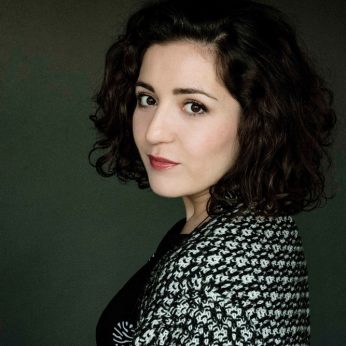Composer: Sergei Rachmaninov (b. 1873 - d. 1943)
Performance date: 02/07/2023
Venue: Bantry House
Composition Year: 1901
Duration: 00:35:30
Recording Engineer: Tom Norton, RTÉ
Instrumentation: vc, pf
Instrumentation Category:Duo
Artists:
Claudio Bohórquez -
[Cello]
Lilit Grigoryan -
[Piano]

Sonata for Cello and Piano Op.19 [1901]
1. Lento – Allegro moderato
2. Allegro scherzando
3. Andante
4. Allegro mosso
I feel like a ghost wandering in a world grown alien. I cannot cast out the old way of writing and I cannot acquire the new. The new kind of music seems to come not from the heart but from the head. Its composers think rather than feel. They have not the capacity to make their works exult, but it may be, too, that the spirit of the times does not call for expression in music. Rachmaninov in 1938
The piano part in this sonata is almost as difficult and spectacular as anything that Rachmaninov conjured up in his preludes and concertos and there are moments when one fears that the cello will disappear in an avalanche of notes. This is constantly balanced by the extraordinary and unique collection of melodies that is given to the cello. He wrote the Sonata in 1901 on the crest of the wave inspired by the success of the Second Piano Concerto and his love for his cousin Natalia.
The confidence in his cello writing resulted from his collaboration for much of the previous decade with the Russian cellist Anatoly Brandukov, who was seventeen years older than Rachmaninov and had composed concertos himself. He was, like Tchaikovsky, whom he had known, a cosmopolitan figure, spending time in Switzerland and France and was part of the famous salon that included Turgenev and the singer, Pauline Viardot, for sixty years the most formidable patron of music in Paris. The Sonata is dedicated to Brandukov, who premiered it with the composer.
In the opening bars there is little sign of the passion to come, the cello beginning in a subdued and questioning mood. But this uncertainty passes and the piano propels the music forward into the Allegro, giving the cello little space to expand on its languid themes. Nonetheless, however urgent the piano’s part, the lyrical instincts of the cello are never completely overwhelmed and in the second subject in particular the cello sings out almost unrestrained.
The piano again threatens to take over completely in the boisterous second movement, almost relegating the cello to the position of continuo, until the central trio section allows the cello to sing out with a joyful new cantilena. And so we come to the famous Andante, where the full singing voice of the cello is quite wonderfully realised. Rachmaninov gives us one of the most tender melodies in romantic music, so bursting with love that the great theme from the Second Piano Concerto seems luke-warm in comparison.
The finale begins as though it is going to be a frantic, joyous dash to the finish, an outpouring of energy after the passionate romance of the Andante, but, miraculously, he slows the tempo and gives us another extraordinary melody, possibly even more memorable, and certainly more Russian, than any other in the work. The expansive nature of this great theme as it luxuriously unfolds makes us realise this is a big powerful movement, written to balance the mighty opening movement, the surest sign of a truly great work. The final coda is magnificent, spectacularly transforming the main theme.
Francis Humphrys
Copyright © 2025 West Cork Music. All rights reserved.
Designed and developed by Matrix Internet